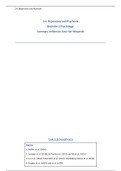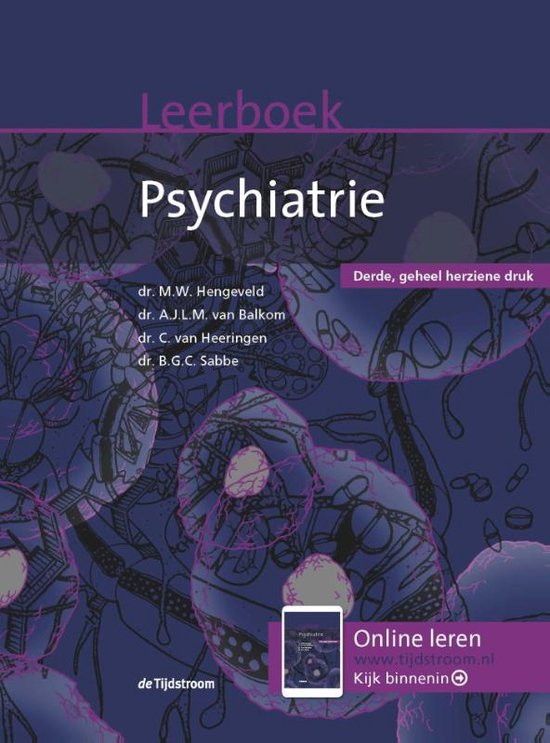3.4. Depression and Psychosis
3.4. Depression and Psychosis
Bachelor-3 Psychology
Summary written by Amy van Wingerde
________________________________________________________________
Task 1: Schizophrenia
Sources
1. Walker et al. (2004)
2. Sommer et al. (2016), de Paula et al. (2015), de Wit et al. (2014)
3. Lin et al. (2016), Greenstein et al. (2014), Stentebjerg-Olesen et al. (2016)
4. Douglas et al. (2009), Link et al. (1999)
, 3.4. Depression and Psychosis
General informaton about schizophrenia from Hengeveld et al. (2009) and DSM-5
- Classificaton of the psychotc disorders㸴 Schizophrenia, schizophreniform disorder,
schizoaffectie disorder, delusional disorder, brief psychotc disorder, shared psychotc
disorder, psychotc disorder due to another medical conditon, and substance/medicaton-
induced psychotc disorder.
- Differental diagnosis is really important to see nhether it has a somatc cause.
- Cognitie, behaiioral and emotonal symptoms, but no single symptom is characteristc of all
schizophrenia patents.
- Heterogeneous clinical syndrome.
- Aioliton (driie to pursue goal-directed behaiior) is linked nith social dysfuncton and
cognitie impairment is linked nith functonal impairment.
- Mood disorders may be concurrent nith the actie-phase symptomatology.
- Assessment of depression, mania and cogniton symptoms is iital for making distnctons
betneen the schizophrenia spectrum and other psychotc disorders.
- Other symptoms㸴 Inappropriate affect, dysphoric mood, disturbed sleep patern, disturbed
food interest, depersonalizaton, anxiety, cognitie impairments, social impairments,
disturbed theory of mind, unanareness of illness, uncommon are hostlity and aggression
(especially younger males nith a history of iiolence), reduced brain iolume, impairments in
motor coordinaton, left-right confusion, minor physical anomalies in the face and limbs.
- Prevalence㸴 Lifetme-preialence is around 0.3-0.7%, more and earlier in males.
- Symptoms emerge typically betneen the late teens and mid-30s, onset prior to adolescence
is rare.
- Most likely to be a gradual onset.
- Eniironmental (urban) and genetc factors for the etology.
- In some cultures, schizophrenia is not treated as a disease, but as a religious thing.
- 5-6% of schizophrenics commit suicide and 20% atempt to.
- Comorbidity㸴 Substance abuse, anxiety disorders.
DSM-5 criteria Schizophrenia
A. Tno (or more) of the folloning, each present for a signifcant porton of tme during a 1-
month period (or less if successfully treated). At least one of these must be (1), (2) or (3):
1. Delusions.
2. Hallucinatons.
3. Disorganized speech (e.g., frequent derailment or incoherence).
4. Grossly disorganized or catatonic behaiior.
5. Negatie symptoms (i.e., diminished emotonal expression or aioliton).
B. For a signifcant porton of the tme since the onset of the disturbance, leiel of functoning in
one or more major areas, such as nork, interpersonal relatons, or self-care, is markedly
belon the leiel achieied prior to the onset (or nhen the onset is in childhood or
adolescence, there is failure to achieie expected leiel of interpersonal, academic, or
occupatonal functoning).
C. Contnuous signs of the disturbance persist for at least 6 months. This 6-month period must
include at least 1 month of symptoms (or less if successfully treated) that meet Criterion A
(i.e., actie-phase symptoms) and may include periods of prodromal or residual symptoms.






